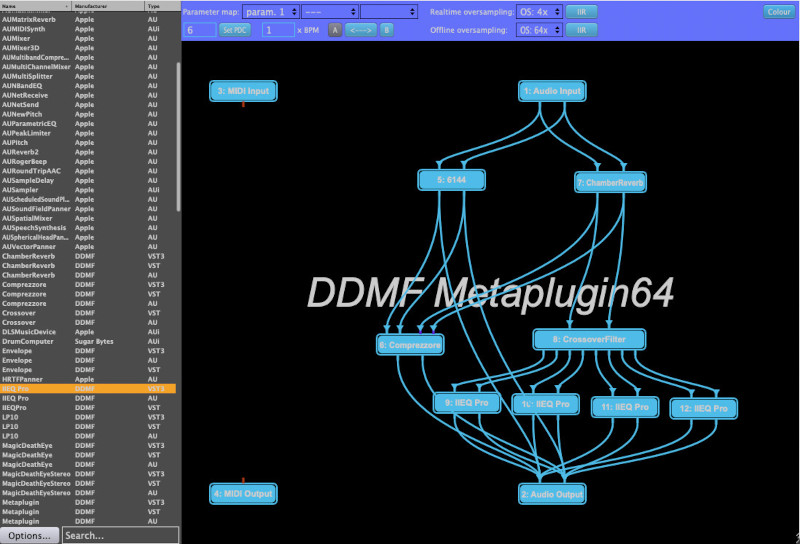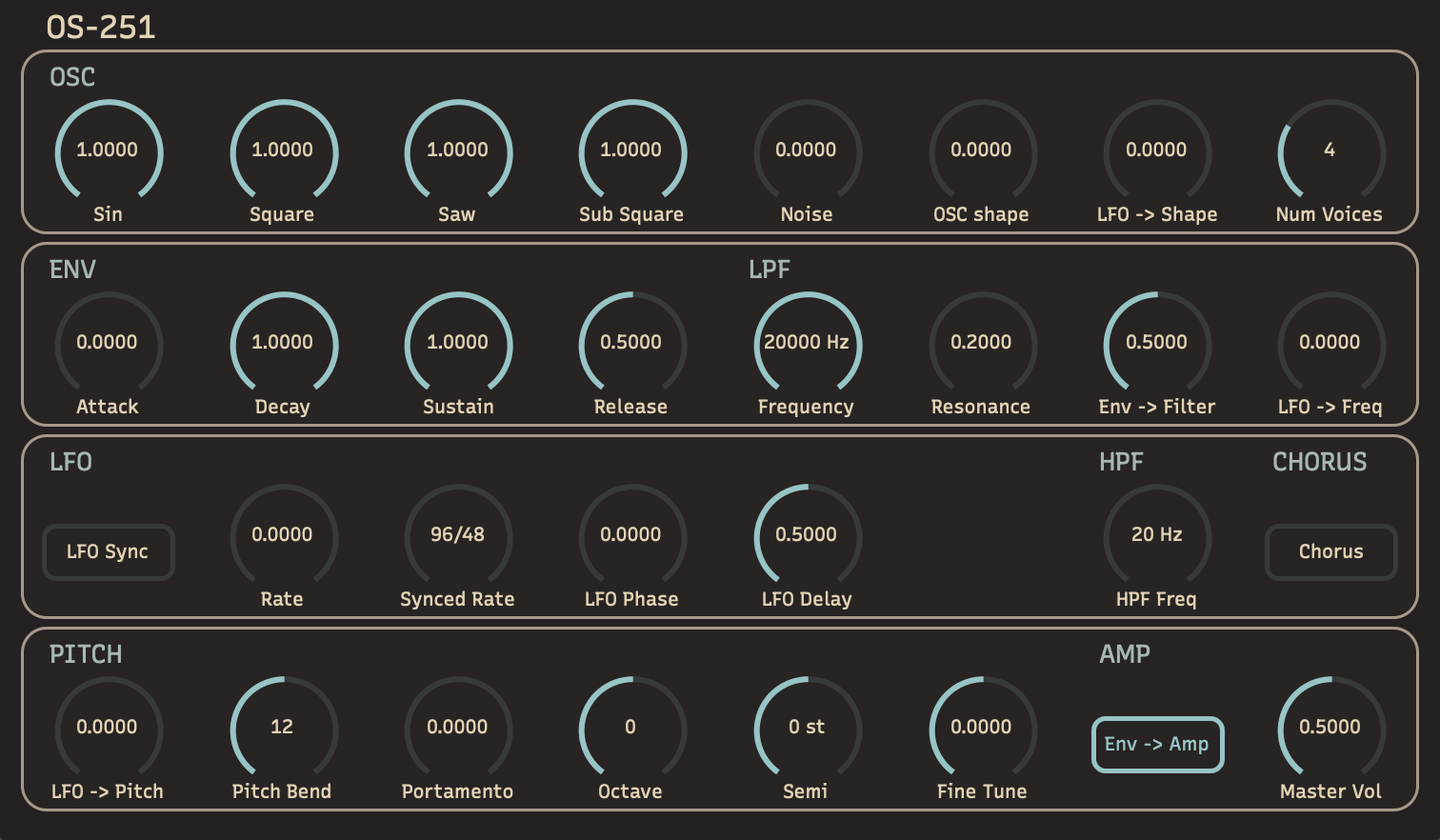
This document describes audio units and how to create them. Audio units are digital audio plug-ins based on Apple’s world class Core Audio technology for OS X.
If you need to manually remove third-party Audio Units plug-ins, you can find the files in the Library folders on your Mac. This squeeze box and free reed wind instrument is suitable for different musical styles, be it traditional, popular or classical. Available as plugin in VST 32 bit and 64 bit and VST3 64 bit versions for Windows as well as in Audio Unit, VST and VST3 for macOS.
- The AmpliTube 5 Custom Shop is a free software package for your Mac or PC that includes a complete guitar dual signal chain; tuner, pedalboard, amplifier, cabinet, microphone and rack effects section. It comes with 39 pieces of gear and access to our unique online virtual music store where you can purchase gear models either a-la.
- AU Lab is a comprehensive Audio Unit host application supplied free with Apple's developer tools, which come with every copy of Mac OS X. We explore a powerful Audio Units plug-in host application you might not realise you already own, called AU Lab. Plus news of the multi-button Apple mouse and Intel architecture changes.
Important: This document describes how to design and build version 2 (V2) audio units, which are set to be deprecated in a future operating system release.
All new audio unit development should employ the audio unit V3 API. For current information about the audio unit V3 API, refer to Audio Unit Framework Reference and to the Audio Unit chapter in App Extension Programming Guide.
As a hobbyist or a computer science student, you can design and build your own audio units to make applications like GarageBand do new things with sound.

As a commercial developer, you can create professional quality software components that provide features like filtering, reverb, dynamics processing, and sample-based looping. You can also create simple or elaborate MIDI-based music synthesizers, as well as more technical audio units such as time and pitch shifters and data format converters.
As part of Core Audio and being integral to OS X, audio units offer a development approach for audio plug-ins that excels in terms of performance, robustness, and ease of deployment. With audio units, you also gain by providing a consistent, simple experience for end-users.
Your target market is wide, including performers, DJs, recording and mastering engineers, and anyone who likes to play with sound on their iMac.
Note: This first version of Audio Unit Programming Guide does not go into depth on some topics important to commercial audio unit developers such as copy protection, parameter automation, and custom views (graphical user interfaces for audio units). Nor does this version provide instruction on developing types of audio units other than the most common type, effect units.
Who Should Read This Document?
To use this document, you should already be familiar with the C programming language. You should be comfortable with using Xcode to create an OS X plug-in as described in the Xcode Overview. For example, you should know about Xcode’s various build options, such as ZeroLink, and when to use them. You should also know how and why to include frameworks and files in the linking phase of an Xcode build.

It’s very helpful in using this document to have enough familiarity with the C++ programming language to read header and implementation files. It’s also helpful to have a basic understanding of the OS X Component Manager as described in Component Manager for QuickTime, as well as a grounding in digital audio coding and audio DSP (digital signal processing).
This document does not address the needs of audio unit host application developers, whose code opens, connects, and uses audio units. Nor is this document an audio unit cookbook. It devotes very few pages to DSP or music synthesis techniques, which work essentially the same way in audio units as in other audio software technologies
Organization of This Document
Depending on your needs and your learning style, you can use this document in the following ways.
If you want to get your hands on building an audio unit right away, go straight to Tutorial: Building a Simple Effect Unit with a Generic View. As you build the audio unit, you can refer to other sections in this document for conceptual information related to what you’re doing.
If you prefer to build your knowledge incrementally, starting with a solid conceptual foundation before seeing the technology in action, read the chapters in order.
If you already have some familiarity with building your own audio units, you may want to go straight to The Audio Unit and Appendix: Audio Unit Class Hierarchy. You might also want to review A Quick Tour of the Core Audio SDK to see if the SDK contains some treasures you haven’t been using until now.
This document contains the following chapters:
Audio Unit Development Fundamentals, a bird's eye view of audio unit development, covering Xcode, the Core Audio SDK, design, development, testing, and deployment
The Audio Unit, design and programming considerations for the part of an audio unit that performs the audio work
The Audio Unit View, a description of the two audio unit view types—generic and custom—as well as an explanation of parameter automation
A Quick Tour of the Core Audio SDK: Taking advantage of the code in the Core Audio SDK is the fastest route to audio unit development
Tutorial: Building a Simple Effect Unit with a Generic View, a tutorial that takes you from zero to a fully functioning effect unit
Appendix: Audio Unit Class Hierarchy, a tour of the audio unit class hierarchy provided by the Core Audio SDK
Making Further Progress in Audio Unit Development
To go forward in developing your own audio units based on what you learn here, you will need:
The ability to develop plug-ins using the C++ programming language, because the audio unit class hierarchy in the Core Audio SDK uses C++.
A grounding in audio DSP, including the requisite mathematics. Alternatively, you can work with someone who can provide DSP code for your audio units, along with someone who can straddle the audio unit and math worlds. For optimum quality and performance of an audio unit, DSP code needs to be correctly incorporated into the audio unit scaffolding.
A grounding in MIDI, if you are developing instrument units.
Required Tools for Audio Unit Development
When you perform a full installation of the current version of OS X, including Xcode Tools, you’ll have everything you need on your system for audio unit development. These items are also available free from Apple’s developer website, http://developer.apple.com:
The latest version of Xcode. The examples in this document use Xcode version 2.4.
The latest OS X header files. The examples in this document use the header files in the 10.4.0 OS X SDK, installed with Apple’s Xcode Tools.
The latest Core Audio development kit. The examples in this document use Core Audio SDK v1.4.3, installed with Apple’s Xcode Tools at this location on your system:
/Developer/Examples/CoreAudioAt least one audio unit hosting application. Apple recommends the AU Lab application, installed with Apple’s Xcode Tools at this location on your system:
/Developer/Applications/Audio/AU LabThe audio unit validation command-line tool,
auval, Apple’s validation tool for audio units, provided with OS X.
See Also
As you learn about developing audio units, you may find the following information and tools helpful:
The coreaudio-api mailing list, a very active discussion forum hosted by Apple that covers all aspects of audio unit design and development.
Audio Unit framework API documentation (preliminary), available from the Audio Topic page on Apple’s developer website.
Additional audio unit API reference available in the Core Audio Framework Reference in Apple’s Reference Library.
The TremoloUnit sample project, which corresponds to the audio unit you build in Tutorial: Building a Simple Effect Unit with a Generic View.
Core Audio Overview, which surveys all of the features available in Core Audio, and describes where audio units fit in.
Bundle Programming Guide, which describes the file-system packaging mechanism in OS X used for audio units.
Component Manager Reference, which describes the API of the Component Manager, the OS X technology that manages audio units at the system level. To learn more about the Component Manager you can refer to Component Manager for QuickTime.
Copyright © 2014 Apple Inc. All Rights Reserved. Terms of Use | Privacy Policy | Updated: 2014-07-15
Audio Units (AU) are a system-level plug-in architecture provided by Core Audio in Apple's macOS and iOS operating systems. Audio Units are a set of application programming interface (API) services provided by the operating system to generate, process, receive, or otherwise manipulate streams of audio in near-real-time with minimal latency. It may be thought of as Apple's architectural equivalent to another popular plug-in format, Steinberg's Virtual Studio Technology (VST).
Because of the many similarities between Audio Units and VST, several commercial and free wrapping technologies are available (e.g. Symbiosis and FXpansionVST-AU Adapter). Celemony Software and PreSonus have also developed the Audio Random Access (ARA) extension, which works for both AU and VST, allowing greater integration between the plug-ins and DAW software.[1]
Use[edit]
Audio Units allows sound file audio time stretching and pitch scaling (e.g., timestretch), sample rate conversion, and streaming over a Local Area Network. It also comes with a set of AU plug-ins such as EQ filters, dynamic processors, delay, reverb, and a Soundbank Synthesizer Instrument.
AU are used by Apple applications such as GarageBand, Soundtrack Pro, Logic Express, Logic Pro, Logic Pro X, Final Cut Pro, MainStage and most 3rd party audio software developed for macOS such as Ableton Live, Amadeus Pro, Ardour, Audio Hijack, DaVinci Resolve, Digital Performer, Gig Performer, REAPER, and Studio One.
Competing technologies[edit]
- Avid's Avid Audio eXtension (a successor to the RTAS format)
- Digidesign's Real Time AudioSuite (now obsolete)
- LADSPA and Disposable Soft Synth Interface (DSSI) for Linux
- LV2 (crossplatform successor to LADSPA)
- Microsoft's DirectX
- Steinberg's Virtual Studio Technology
Audio Units Mac Free Trial
References[edit]

- ^'Celemony introduces ARA Audio Random Access - Extension for Plug-in Interfaces'. KVR Audio. Retrieved 2018-06-05.
Denoiser premiere pro cc 2018 download.